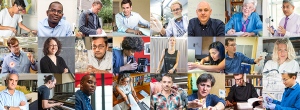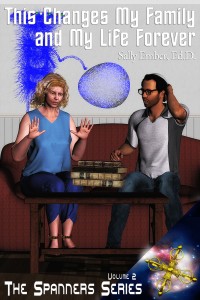#COVID19 / #Coronavirus Updates and Info Sources
As some of you know, my mom (almost 88, but mostly healthy) and I (65) live in St. Louis County, Missouri, USA, which just “confirmed” its first case of the #Coronavirus. It exists in a young woman who was allowed to return from ‘studying abroad” Italy last week unencumbered (!?!). She went to a hospital that is and therefore must live very close to us.
Who knows where she went, who else she contacted/infected, who her people are, etc.? No other info was made available, so I am feeling very cautious locally for the first time.
My mom, however, is in huge denial and refuses to cancel her four-times weekly mah jong gatherings/games with 4 – 5 elderly women (she is one of the youngest!) this week (3/8/20).
I, however, after reading up on all this, am beginning to ‘stockpile” toilet paper (not too much), tissues, non-perishable or less-perishable food, and put out the Hydrogen Peroxide spray and paper towels for her to use when she returns each day, to wipe down the handles of her cart and/or walker.
We are also going to cleanse her mah jong tiles each afternoon after she returns.
They eat lunch there twice/week, and use the bathroom frequently; plus, others use the same space (the condo’s “clubhouse”), so who the hell knows what anyone is carrying and/or shedding??). I begged her to demand that her friends to WASH THEIR HANDS every time they leave the table for any reason, before returning to play. She is pooh-poohing that request (so far).
I finally decided: if this is what kills her, so be it. At least she’s having fun. Not kidding. I’m a Buddhist, so we take a common-sense approach to everyone’s inevitable demise.
Not wishing death on anyone any time soon, but since these articles and stats are likely to be correct, we are ALL going to lose friends and loved ones, or our own lives, before this is “finished,” if it ever is…. Buckle up.
And, if you’re not sure if what you’re sneezing, coughing, or aching about is this virus, check here:

So, FYI: Some great sources, in detail, below, and links, first, for more info.
Please make sure the info you “follow” is reliable, accurate, and trustworthy!
Stay safe and well. In case you are thinking: Oh, don’t be such an alarmist, read this, of the CLOSING DOWN of main population centers in Italy this weekend (3/7/20): https://www.bbc.com/news/world-middle-east-51787238?fbclid=IwAR2yMGdBkvhyn8Kyae9Xt6P_dSqebjXWGbsN31Ut8EZuRTaL5GQ8MFs06qM
When/if you are self-quarantined or hospitalized and want to read utopian, romantic, non-violent sci-fi, buy my 3 ebooks and/or paperback books! Give them as gifts. Why not? http://www.sallyember.com/Spanners
Sally Ember, Ed.D. (NOT A DOCTOR OF MEDICINE)
A) One excellent ongoing and frequently updated source, here, is Germ Info, http://germinfo.org which is excellent. Read and share from there and/or on Facebook: https://www.facebook.com/groups/germinfo/permalink/2311603802276736/
B) A little light in the tunnel, for this horrible time, from Stanford University Labs: a faster and soon-to-available corona virus test kit for USA use: https://www.sacbee.com/news/california/article240974406.html

C) This is a cogent list of info and tips, from a public health expert (
Malia Jones, PhD, MPH), who posted the main part of this on
Facebook and
Google Docs.
******Anyone planning to travel in the next two-three weeks, or even 6-7 weeks from 3/8/20, read number 5!!!******
*************Keep reading, and share!
“What I think about COVID-19 this morning”
“March 5, 2020”
“Maybe I’m the closest thing you personally know to an infectious disease epidemiologist. Maybe not–I’m not an expert on this virus by any stretch, but I have general knowledge and training from studying epidemics that is applicable, so here are my thoughts.
“First and foremost: we are going to see a tremendous increase in the number of US cases of COVID-19 in the next week. This is not because of some new pattern in the spread of the disease, but rather due to a major change in the requirements to be tested. Until yesterday (3/4/20), if you had flulike illness but had not recently traveled to China, Italy, South Korea, or Iran, you could not be tested. This is just the way healthcare works, you get tested if you meet the case definition and the case definition included travel.
“As of yesterday (3/4/20), you can be tested if you are sick and have a doctor’s order to be tested. So expect things to feel a lot more panicky all of a sudden. We will see hundreds or thousands of new cases as a result of testing increases.
“Second: is that panic legitimate? Sort of. This is not the zombie apocalypse. The death rate of 30 deaths per 1000 cases is probably a wild overestimate. (The denominator is almost certainly wrong because it is confirmed cases–and we only confirm cases when we test for them). That said, even at 3 per 1000 cases, this would be a big deal. A very big deal.
“By way of comparison, the death rate for influenza is between 1 and 2 in 1000 cases. So, yeah. Roughly 0x to 30x worse than a bad seasonal flu year? That’s a problem.
“Unlike flu, COVID-19 is not *particularly* dangerous for children, so that’s some happy news. It is dangerous for older adults and those with lung conditions, so we need to be extra careful to protect those populations from exposure.
“Also, for millions of Americans, getting any serious illness requiring a hospitalization is a major problem because they can’t pay for it. And our health care system is probably going to struggle to keep up with it all. And with China basically closed, our global economy is going to take a huge hit and we’ll feel the shockwaves for years. Those are real concerns.
“What can we do? Our focus should be on *slowing down the spread* of this disease so that we have time to get caught up. Here is my advice:
“1. Wash. Your. Hands. Wash them so much.
The current best guess is that coronavirus is transmitted via close contact and surface contamination. A very small study came out yesterday suggesting that the virus causing COVID-19 is *mostly* transmitted via contact with contaminated surfaces.
“I have started washing my hands each time I enter a new building and after being in shared spaces (classrooms especially), in addition to the standard practice of washing after using the bathroom and before eating. Soap and water. Hand sanitizer also kills this virus, as does rubbing alcohol (the main ingredient in hand sanitizer).
“There is no need to be obsessive about this. Just wash your hands. A little bit more effort here goes a long way.
“2. Don’t pick your nose. Or put your fingers in your mouth, on your lips, or in your eyes. Surface contact works like this: you touch something dirty. Maybe it’s an elevator button. Virus sticks to your hands. Then you rub your eye. Then you touch your sandwich, and put the sandwich in your mouth. Now there is virus in your eyes and mouth. See?
“You may be thinking, ‘but I don’t pick my nose because I am an adult!’ An observational study found that people sitting at a desk working touched their eyes, nose, or lips between 3 and 50 times per hour. Perfectly normal grown-ups, not lowlifes like my friends.
“2a. There was one note that came out suggesting that face masks actually promote surface contamination because you’re always adjusting them–i.e., touching your face. I don’t know if that’s true. But face masks should not be worn by the public right now, unless you are the person who is sick and you’re on your way to or actually at the doctor’s office. The mask’s function is to prevent spit from flying out of your mouth and landing on things when you cough or sneeze. It flies out of your mouth and is caught in the mask instead. If you are the person who is sick and not on the way to the doctor, go home. Let the people who really need them have the masks. Like doctors.
“[ETA on 3/6/2020 honestly people I am getting so much push back on the mask recommendation!! The world is running low on masks. If everyone wants a mask so they can feel ok about keeping their Daytona Beach Spring Break plans and then hospitals in India can’t buy them anymore, shame on us.]
“Coronavirus does not appear to be airborne in the sense that doesn’t remain floating around freely in the air for a long time, like measles does. You are probably not going to breathe it in, unless someone is coughing in front of you. If someone is coughing in your face, feel free to tell them to get their ass home and move 6 feet away from them. (Yeah I know, if you have a toddler, you’re screwed.)
“3. Sanitize the objects you and lots of other people touch, especially people outside your family–like door handles, shared keyboards at schools (brrr), salad bar tongs, etc. Best guesses are that the virus can live on surfaces for 2-48 hours, maybe even longer, depending on the surface, temperature, and humidity.
“Many common household cleaning products will kill this virus. However, white vinegar solution does not. You can make your own inexpensive antimicrobial spray by mixing 1 part household bleach to 99 parts cold tap water. Spray this on surfaces and leave for 10-30 minutes. Note: this is bleach. It will ruin your sofa.
“4. “Social distancing.” You’re going to get so sick of this phrase. This means keeping people apart from one another (preferably 6 feet apart, and sanitizing shared objects). This public health strategy is our next line of defense, and its implementation is what will lead to flights and events cancelled, borders closed, and schools closed.
“For now, you could limit face-to-face meetings, especially large ones. Zoom is an excellent videoconferencing option. If you spend time in shared spaces, see #1. Ask your child’s school about their hygiene plan, if they haven’t already told you what it is. If I were in charge of a school setting, I’d be hand sanitizing the s*** out of the kids’ hands, including in and out of each space, and taking temperatures at the door. I am planning to email our school nurse right after this to ask if they need my volunteer help cleaning surfaces.
“If you can telecommute, do that a little more. If you are someone’s boss and they could do their job remotely, encourage them to do that.
“Avoid large gatherings of people if at all possible, especially if they are in an area with cases OR places that lots of people travel to. If you attend group events and start to feel even a little bit sick within 2 to 14 days, you need to self isolate immediately. Like for a tiny tickle in your throat.
“5. All your travel plans are about to get screwed up. If you are considering booking flights right now, get refundable tickets. ETA: most trip insurance will not cover cancellations due to a pandemic. Look for “cancel for any reason” trip insurance.
“Considerations for risks related to that trip you’re planning: how bad would it be if you got stuck where you are going for 3 to 6 weeks? How bad would it be to be isolated at home for 2-3 weeks upon your return? Do you have direct contact with people who are over 70 and/or have lung conditions? If those seem really bad to you, rethink your trip, especially if it is to a location where there are confirmed cases.
“6. If you are sick, stay home. Please! For the love of all that is holy. Stay at home. Your contributions to the world are really just not that important.
“7. There is a good chance some communities will see school cancelled and asked to limit non-essential movement. If someone in your family gets sick your family will almost certainly be isolated for 2-3 weeks (asked to stay at home). You could start stocking up with essentials for that scenario, but don’t run out and buy a years’ worth of toilet paper. Again, not the apocalypse. 2 weeks’ worth of essential items. Refill any prescriptions, check your supply of coffee, kitty litter, and jigsaw puzzles.
“8. I do want to remind everyone that when public health works, the result is the least newsworthy thing ever: nothing happens. If this all fizzles out and you start feeling like ‘Wah, all that fuss for nothing??’ Then send a thank-you note to your local department of public health for a job well done. Fingers crossed for that outcome.
“9. Look, I think there are some positives here. All this handwashing could stop flu season in its tracks! We have an opportunity to reduce our global carbon footprint by telecommuting more, flying less, and understanding where our stuff comes from. We can use this to think about the problems with our healthcare system. We can use this to reflect on our positions of privilege and implicit biases. We can start greeting each other using jazz hands. I’m genuinely excited about those opportunities.
“There is a lot we don’t yet know about this virus. It didn’t even exist 90 days ago. So stay tuned, it is an evolving situation. The WHO website has a decent FAQ. Free to email or text with questions, and you can forward this to others if you think it’s useful.
“May the force be with you.
“Malia Jones, PhD, MPH“
“I’m an Assistant Scientist in Health Geography at the Applied Population Laboratory at the University of Wisconsin-Madison. I study social contact of humans, and spatial patterns of infectious disease, among other things.”
“P.S. The number one question I am getting is, ‘did you really write this?’ Yes. I wrote this.”
“I didn’t write it for professional purposes, so I didn’t put my work email on it. It was really just meant to be an email to my friends and family in advance of what I expect to be an escalation in the panic level. But it was apparently welcome information and went viral on FB. I’ve decided not to edit out the swears, even though I wrote this with a much smaller audience in mind.
“Thanks for checking your facts! Go science!”
D) More good info about what to expect regarding the USA and global experiences of the #COVID19 pandemic (and a bit less discouraging in some places; more, in others), from Juliana Grant, MD, MPH:
“Coronavirus: an email to my family”
[not mine; this woman–info, below–who is a public health expert]
“Notes: I originally wrote this to share with my family and close friends. It’s now getting passed around so I’m posting it publicly. I have revised the language slightly a few times. This is the most current version.”
“Hi folks,
“A number of you have asked me what I think is going to happen with coronavirus (COVID-19) and what we should be doing to prepare. I have a few thoughts about what’s likely to happen and what you can do about it. For those of you who don’t know me well, I am a preventive medicine physician and infectious disease epidemiologist. I graduated from the CDC’s Epidemic Intelligence Service and have over 17 years of experience in the field, most of that with CDC.
“Wishing everyone good health,
“Juliana”
—“Who[m] should you listen to?”
“The CDC and your state health department are your best place for information about COVID-19. (Listen to them before you listen to me.) Be cautious about other sources of information – many of them will not be reliable or accurate.
—“How bad is this going to be?”
“It’s possible that COVID-19 will be similar to a bad flu year but there are a number of indications that it will be very much like the 1918 Flu Pandemic. To put that in perspective, the 1918 flu did not end civilization as we know it but it was the second-deadliest event of the last 200 years. It is likely that people you know will die from COVID-19.
“However, there is one critical difference between COVID-19 and the 1918 flu – the 1918 flu virus hit children and young adults particularly hard. COVID-19 seems to be most severe in older adults. Children and young adults generally have mild infections and we are grateful for this.
—“What can we expect?”
“This is not the zombie apocalypse. Core infrastructure (e.g., power, water, supermarkets, internet, government, etc.) will continue to work, perhaps with some minor disruptions.
“There will be significant economic disruption: a global recession is very possible and there will probably be significant shortages of some products. The healthcare system will be hit the hardest. The number of people who are likely to get sick is higher than our healthcare systems can probably handle.
“Daily life will be impacted in important ways. Travel is likely to be limited and public gatherings will probably be canceled. Schools will probably be closed. Expect health departments to start issuing these orders in the near future, especially on the West Coast.
“The acute pandemic will probably last at least for several months and quite possibly for a year or two.
—“What can we do?”
“We can’t keep COVID-19 from being a global pandemic but the more we can do to slow the spread of the disease, the less severe the impact will be. With that in mind, here are the things you can do:
—–“Stay calm but take it seriously. This will likely be bad but it’s not the apocalypse.
—–“Stay home if you’re sick or someone in your house is sick.
—–“Leave medical supplies for healthcare workers. You shouldn’t be stockpiling masks or other medical supplies. They are needed in hospitals to keep our healthcare workers healthy.
—–“Wash your hands. Get in the habit of frequently washing your hands thoroughly and covering your cough.
—–“Minimize your exposure. Now that we’re seeing community transmission in the U.S., it’s probably time to start cutting back on your exposure to other people. Depending on your circumstances, consider:
——-“Canceling non-essential travel
——-“Avoiding large-scale gatherings
——-“Working from home if possible
——-“Minimizing direct contact with others including hand shakes and hugs
——-“Reducing your trips out of the house. If possible, shop for two weeks of groceries at once or consider having your groceries delivered. Stay home and cook instead of going to a restaurant.
——-“Remember, keep calm and prepare. This is likely to be bad, but if we respond calmly and thoughtfully, we can handle it.
“Feel free to share this [email] as you see fit.”
from: https://www.julianagrant.com/blog/2020/2/29/coronavirus
E) If you’re ready for very sobering stats about the trajectory of this, that we are all facing NOW and soon:
“I am sharing this with you because many people have not yet started preparing. For schools being out. Work being out. No parties. No restaurants. No gatherings. No Uber. No eating out. This may make you panic or worry a lot. This is what I see happening. In 6 weeks from now. Not only in America. In every country.
“That’s why I tell you to cancel all you travel plans. Cancel any parties you are going to or organizing. I want you to protect your family. The only way to get ahead of this is to minimize human to human contact until we have diagnostics, vaccines, medications. I believe all schools should close soon. Very soon. Do not read if you are already panicked!”
“From Liz Specht on Twitter, @LizSpecht
“‘I think most people aren’t aware of the risk of systemic healthcare failure due to COVID19 because they simply haven’t run the numbers yet. Let’s talk math. Let’s conservatively assume that there are 2,000 current cases in the US today, March 6th. This is about 8x the number of confirmed (lab-diagnosed) cases. We know there is substantial under-Dx due to lack of test kits; I’ll address implications later of under-/over-estimate.
‘We can expect that we’ll continue to see a doubling of cases every 6 days (this is a typical doubling time across several epidemiological studies). Here I mean *actual* cases. Confirmed cases may appear to rise faster in the short term due to new test kit rollouts.
‘*** We’re looking at about 1M US cases by the end of April, 2M by ~May 5, 4M by ~May 11, and so on.
‘*** Exponentials are hard to grasp, but this is how they go. As the healthcare system begins to saturate under this case load, it will become increasingly hard to detect, track, and contain new transmission chains. In absence of extreme interventions, this likely won’t slow significantly until hitting >>1% of susceptible population.
‘What does a case load of this size mean for healthcare system? We’ll examine just two factors — hospital beds and masks — among many, many other things that will be impacted.
‘The US has about 2.8 hospital beds per 1000 people. With a population of 330M, this is ~1M beds. At any given time, 65% of those beds are already occupied. That leaves about 330k beds available nationwide (perhaps a bit fewer this time of year with regular flu season, etc). Let’s trust Italy’s numbers and assume that about 10% of cases are serious enough to require hospitalization. (Keep in mind that for many patients, hospitalization lasts for *weeks* — in other words, turnover will be *very* slow as beds fill with COVID19 patients).
‘By this estimate, by about May 8th, all open hospital beds in the US will be filled. (This says nothing, of course, about whether these beds are suitable for isolation of patients with a highly infectious virus.) If we’re wrong by a factor of two regarding the fraction of severe cases, that only changes the timeline of bed saturation by 6 days in either direction. If 20% of cases require hospitalization, we run out of beds by ~May 2nd. If only 5% of cases require it, we can make it until ~May 14th. 2.5% gets us to May 20th.
‘This, of course, assumes that there is no uptick in demand for beds from *other* (non-COVID19) causes, which seems like a dubious assumption. As healthcare system becomes increasingly burdened, Rx shortages, etc, people w/ chronic conditions that are normally well-managed may find themselves slipping into severe states of medical distress requiring intensive care & hospitalization. But let’s ignore that for now.
‘Alright, so that’s beds. Now masks.
‘Feds say we have a national stockpile of 12M N95 masks and 30M surgical masks (which are not ideal, but better than nothing). There are about 18M healthcare workers in the US. Let’s assume only 6M HCW are working on any given day. (This is likely an underestimate as most people work most days of the week, but again, I’m playing conservative at every turn.)
‘As COVID19 cases saturate virtually every state and county, which seems likely to happen any day now, it will soon be irresponsible for all HCWs to not wear a mask. These HCWs would burn through N95 stockpile in 2 days if each HCW only got ONE mask per day.
‘One per day would be neither sanitary nor pragmatic, though this is indeed what we saw in Wuhan, with HCWs collapsing on their shift from dehydration because they were trying to avoid changing their PPE suits as they cannot be reused. How quickly could we ramp up production of new masks? Not very fast at all. The vast majority are manufactured overseas, almost all in China.
‘Even when manufactured here in US, the raw materials are predominantly from overseas… again, predominantly from China. Keep in mind that all countries globally will be going through the exact same crises and shortages simultaneously. We can’t force trade in our favor.
‘Now consider how these 2 factors – bed and mask shortages – compound each other’s severity. Full hospitals + few masks + HCWs running around between beds without proper PPE = very bad mix. HCWs are already getting infected even w/ access to full PPE. In the face of PPE limitations this severe, it’s only a matter of time.
‘HCWs will start dropping from the workforce for weeks at a time, leading to a shortage of HCWs that then further compounds both issues above. We could go on and on about thousands of factors – # of ventilators, or even simple things like saline drip bags.
‘You see where this is going. Importantly, I cannot stress this enough: even if I’m wrong – even VERY wrong – about core assumptions like % of severe cases or current case #, it only changes the timeline by days or weeks.
‘This is how exponential growth in an immunologically naïve population works. Undeserved panic does no one any good. But neither does ill-informed complacency. It’s wrong to assuage the public by saying “only 2% will die.”
‘People aren’t adequately grasping the national and global systemic burden wrought by this swift-moving of a disease. I’m an engineer. This is what my mind does all day: I run back-of-the-envelope calculations to try to estimate order-of-magnitude impacts. I’ve been on high alarm about this disease since ~Jan 19 after reading clinical indicators in the first papers emerging from Wuhan.
‘Nothing in the last 6 weeks has dampened my alarm in the slightest. To the contrary, we’re seeing abject refusal of many countries to adequately respond or prepare.
‘Of course, some of these estimates will be wrong, even substantially wrong. But I have no reason to think they’ll be orders-of-magnitude wrong. Even if your personal risk of death is very, very low, don’t mock decisions like canceling events or closing workplaces as undue “panic”. These measures are the bare minimum we should be doing to try to shift the peak – to slow the rise in cases so that healthcare systems are less overwhelmed.
‘Each day that we can delay an extra case is a big win for the HC system. And yes, you really should prepare to buckle down for a bit. All services and supply chains will be impacted. Why risk the stress of being ill-prepared?
‘Worst case, I’m massively wrong and you now have a huge bag of rice and black beans to burn through over the next few months and enough Robitussin to trip out. One more thought: you’ve probably seen multiple respected epidemiologists have estimated that 20-70% of world will be infected within the next year.
‘If you use 6-day doubling rate I mentioned above, we land at ~2-6 billion infected by sometime in July of this year. Obviously I think the doubling time will start to slow once a sizeable fraction of the population has been infected, simply because of herd immunity and a smaller susceptible population.
‘But take the scenarios above (full beds, no PPE, etc, at just 1% of the US population infected) and stretch them out over just a couple extra months. That timeline roughly fits with consensus end-game numbers from these highly esteemed epidemiologists. Again, we’re talking about discrepancies of mere days or weeks one direction or another, but not disagreements in the overall magnitude of the challenge.
‘This is not some hypothetical, fear-mongering, worst-case scenario. This is reality, as far as anyone can tell with the current available data.
That’s all for now. Standard disclaimers apply: I’m a PhD biologist but *not* an epidemiologist. Thoughts my own. Yadda yadda. Stay safe out there.'”
F) What about a vaccine? Israel claims to be able to have one ready near the end of April, or by mid-May, 2020, but “Anthony Fauci, the longtime director of the National Institute of Allergy and Infectious Diseases (N.I.A.I.D.) [in the USA], spoke up. ‘A vaccine that you make and start testing in a year is not a vaccine that’s deployable,’ he said. The earliest it would be deployable, Fauci added, is ‘in a year to a year and a half, no matter how fast you go.’”
https://www.newyorker.com/news/news-desk/how-long-will-it-take-to-develop-a-coronavirus-vaccine
Trials/testing take more than a year, but this just got released (3/8/20):
“Coronavirus vaccine ready for clinical trials in Seattle”
“Researchers seek 45 participants to help gauge the immune response of
a new vaccine for 2019 novel coronavirus….
“
The goal of the first phase of the study is to learn about the vaccine’s safety and see how the immune system responds to it….
“Researchers said this vaccine is similar to vaccines developed for Zika virus and human metapneumovirus….
“Kaiser Permanente said participants will receive $100 for each of the in-person study visits….
“People who complete all visits will receive $1,100….
“[Participants must be]
healthy adults between 18 and 55 years old. The participants can’t have certain health conditions, such as medical conditions that impact the immune system or be taking medications that affect the immune system….
“Participants must come to 11 in-person study visits in downtown Seattle and have four phone conversations over 14 months. Over the course of the visits, participants will be injected with the vaccine twice.”FMI or to sign up:
“
https://www.king5.com/article/news/health/coronavirus/coronavirus-vaccine-clinical-trial-recruitment/281-a33490a2-e3e4-4911-94fc-60473c2d4fe7?fbclid=IwAR2h3B_6dEOPQUUBNV8EMntFJKuup3IkAubxVlpc0uYlo3yKpMqjGyBD1aE
Share this: CounterSocial









 Kazuo Ishiguro
Kazuo Ishiguro ICAN logo
ICAN logo Kip Thorne
Kip Thorne Rainer Weiss
Rainer Weiss Barry Barish
Barry Barish Jacques Dubochet
Jacques Dubochet Richard Henderson
Richard Henderson Joachim Frank
Joachim Frank Richard Thaler
Richard Thaler Jeffrey C. Hall
Jeffrey C. Hall Michael Rosbash
Michael Rosbash Michael W. Young
Michael W. Young



















































You must be logged in to post a comment.